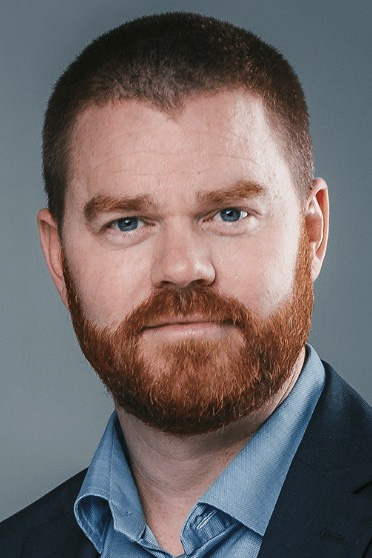/ Featured Blogs
Turning the Tide of Online Scams: Interview With Prof. Jorij Abraham, Global Anti-Scam Alliance
 Professor Jorij Abraham has been a part of the international eCommerce community since 1997. From 2013 -- 2017, he has been Director of Research & Advise at Thuiswinkel.org (the Dutch Ecommerce Association) and the European Ecommerce Association with 25.000+ members in 20 countries. He is now Managing Director of Global Anti-Scam Alliance, whose mission is to protect consumers from getting scammed. He is also e-commerce professor at the University of Applied Sciences, TIO.
Professor Jorij Abraham has been a part of the international eCommerce community since 1997. From 2013 -- 2017, he has been Director of Research & Advise at Thuiswinkel.org (the Dutch Ecommerce Association) and the European Ecommerce Association with 25.000+ members in 20 countries. He is now Managing Director of Global Anti-Scam Alliance, whose mission is to protect consumers from getting scammed. He is also e-commerce professor at the University of Applied Sciences, TIO.
- By Rickard Vikström
- Comments: 0
- Views: 14,720
Pinpointing Urban Broadband Gaps
 The City of Chicago asked some researchers at the University of Chicago for help to identify the neighborhoods and the number of households that are not connected to broadband. It's been well known that large numbers of people in cities don't have broadband, but there have been no easy ways to pinpoint where solutions are needed.
The City of Chicago asked some researchers at the University of Chicago for help to identify the neighborhoods and the number of households that are not connected to broadband. It's been well known that large numbers of people in cities don't have broadband, but there have been no easy ways to pinpoint where solutions are needed.
- By Doug Dawson
- Comments: 0
- Views: 6,226
The Continued Rise of Phishing and the Case of the Customizable Site
 We’ve noted in previous CSC studies that phishing continues to be an extremely popular threat vector with bad actors and shows no signs of subsiding in part, because of the COVID–19 pandemic and the rise in popularity of remote working. Indeed, the most recent figures from the Anti-Phishing Working Group (APWG) show that the numbers of phishing attacks are higher than ever before, with the quarterly total of identified unique phishing attacks exceeding 1 million for the first time in Q1 2022, and over 600 distinct brands attacked each month.
We’ve noted in previous CSC studies that phishing continues to be an extremely popular threat vector with bad actors and shows no signs of subsiding in part, because of the COVID–19 pandemic and the rise in popularity of remote working. Indeed, the most recent figures from the Anti-Phishing Working Group (APWG) show that the numbers of phishing attacks are higher than ever before, with the quarterly total of identified unique phishing attacks exceeding 1 million for the first time in Q1 2022, and over 600 distinct brands attacked each month.
- By David Barnett
- Comments: 0
- Views: 11,432
Broadband Satellite Issues
 One of the most interesting aspects of serving broadband from low-orbit satellites is that it brings issues related to space into broadband discussion. Space issues were less important for high earth orbit satellites that sit 20,000 miles above the earth. Other than an occasional impact from sunspots, there wasn't much of note. But there are two recent events that highlight our new focus on low-earth orbit satellites.
One of the most interesting aspects of serving broadband from low-orbit satellites is that it brings issues related to space into broadband discussion. Space issues were less important for high earth orbit satellites that sit 20,000 miles above the earth. Other than an occasional impact from sunspots, there wasn't much of note. But there are two recent events that highlight our new focus on low-earth orbit satellites.
- By Doug Dawson
- Comments: 0
- Views: 7,626
Price Increases for .COM and .NET: The Generated Impact on the Performance of the Two TLDs
 Verisign announced a few days ago a decrease of 0.4 million domain name registrations for .COM and .NET Top Level Domains, a first time in the history of these TLDs. Could this decrease be related to the successive price increases of September 2021 and September 2022? On 28 July 2022, Verisign, the registry for the .COM and .NET TLDs, announced that it would be applying a 10% increase in the price of .NET domains as of 1 February 2023.
Verisign announced a few days ago a decrease of 0.4 million domain name registrations for .COM and .NET Top Level Domains, a first time in the history of these TLDs. Could this decrease be related to the successive price increases of September 2021 and September 2022? On 28 July 2022, Verisign, the registry for the .COM and .NET TLDs, announced that it would be applying a 10% increase in the price of .NET domains as of 1 February 2023.
- By Loic Damilaville
- Comments: 0
- Views: 10,948
Solving the .US Registrant Data Directory Services (RDDS) Conundrum
 Recently ten Democratic Members of Congress wrote a letter to Alan Davidson, head of the NTIA, requesting that the "NTIA immediately cease the public disclosure of personal information about users of .US" country code top-level domain (ccTLD). This communication highlights a significant concern regarding domain registration data: the need to protect the privacy rights of Registrants. However, an equally significant concern regarding registration data was raised...
Recently ten Democratic Members of Congress wrote a letter to Alan Davidson, head of the NTIA, requesting that the "NTIA immediately cease the public disclosure of personal information about users of .US" country code top-level domain (ccTLD). This communication highlights a significant concern regarding domain registration data: the need to protect the privacy rights of Registrants. However, an equally significant concern regarding registration data was raised...
- By Michael D. Palage
- Comments: 3
- Views: 9,791
Google Fiber to Push Speed Limits Again
 Dinni Jain, the CEO of Google Fiber, posted a blog last week that talks about dramatically increasing the top speeds available on fiber. He says the specific announcement will come in the coming months to dramatically expand Google Fiber's gigabit offerings. The blog gives a hint at what might be coming. Included in the blog is a speed test from the home of a Google Fiber employee in Kansas City who is receiving 20.2 Gbps.
Dinni Jain, the CEO of Google Fiber, posted a blog last week that talks about dramatically increasing the top speeds available on fiber. He says the specific announcement will come in the coming months to dramatically expand Google Fiber's gigabit offerings. The blog gives a hint at what might be coming. Included in the blog is a speed test from the home of a Google Fiber employee in Kansas City who is receiving 20.2 Gbps.
- By Doug Dawson
- Comments: 0
- Views: 5,679
Four Steps to an Effective Brand Protection Program
 Internet use has become ever more pervasive. With around five billion global users, it generates an economy of around 15% of global gross domestic product (GDP); that's around $15 trillion and is a figure that's growing 2.5 times faster than GDP itself. This makes the internet an attractive channel for infringers. Phishing and other fraud tactics, selling counterfeit goods online, and digital piracy are primary areas of concern.
Internet use has become ever more pervasive. With around five billion global users, it generates an economy of around 15% of global gross domestic product (GDP); that's around $15 trillion and is a figure that's growing 2.5 times faster than GDP itself. This makes the internet an attractive channel for infringers. Phishing and other fraud tactics, selling counterfeit goods online, and digital piracy are primary areas of concern.
- By David Barnett
- Comments: 0
- Views: 9,360
Developing Models for the Prediction of Domain Name Renewal Rates
 One of the key issues for the Domain industry is how to accurately predict year-on-year how many customers will renew their domain names. It's fairly common that a registry in the first year has around a 60% renewal rate, and following the first year, that increases to around 80 and 85 percent on the remaining domain names. But how can we understand better why this is so, how can this be more accurately predicted, and what can be done to help maximize these opportunities?
One of the key issues for the Domain industry is how to accurately predict year-on-year how many customers will renew their domain names. It's fairly common that a registry in the first year has around a 60% renewal rate, and following the first year, that increases to around 80 and 85 percent on the remaining domain names. But how can we understand better why this is so, how can this be more accurately predicted, and what can be done to help maximize these opportunities?
- By Rickard Vikström
- Comments: 0
- Views: 7,607
Toward an ITU Renaissance
 For nearly fifty years now, a significant portion of my professional engineering and lawyering life has been threaded through the International Telecommunication Union (ITU). It has included all of its multiple sectors, working on the inside for two Secretary-Generals and running its Relations between Members and Regulations Division, writing two books including "The ITU in a Changing World" with the late George Codding, representing the U.S. at several conferences...
For nearly fifty years now, a significant portion of my professional engineering and lawyering life has been threaded through the International Telecommunication Union (ITU). It has included all of its multiple sectors, working on the inside for two Secretary-Generals and running its Relations between Members and Regulations Division, writing two books including "The ITU in a Changing World" with the late George Codding, representing the U.S. at several conferences...
- By Anthony Rutkowski
- Comments: 0
- Views: 6,587